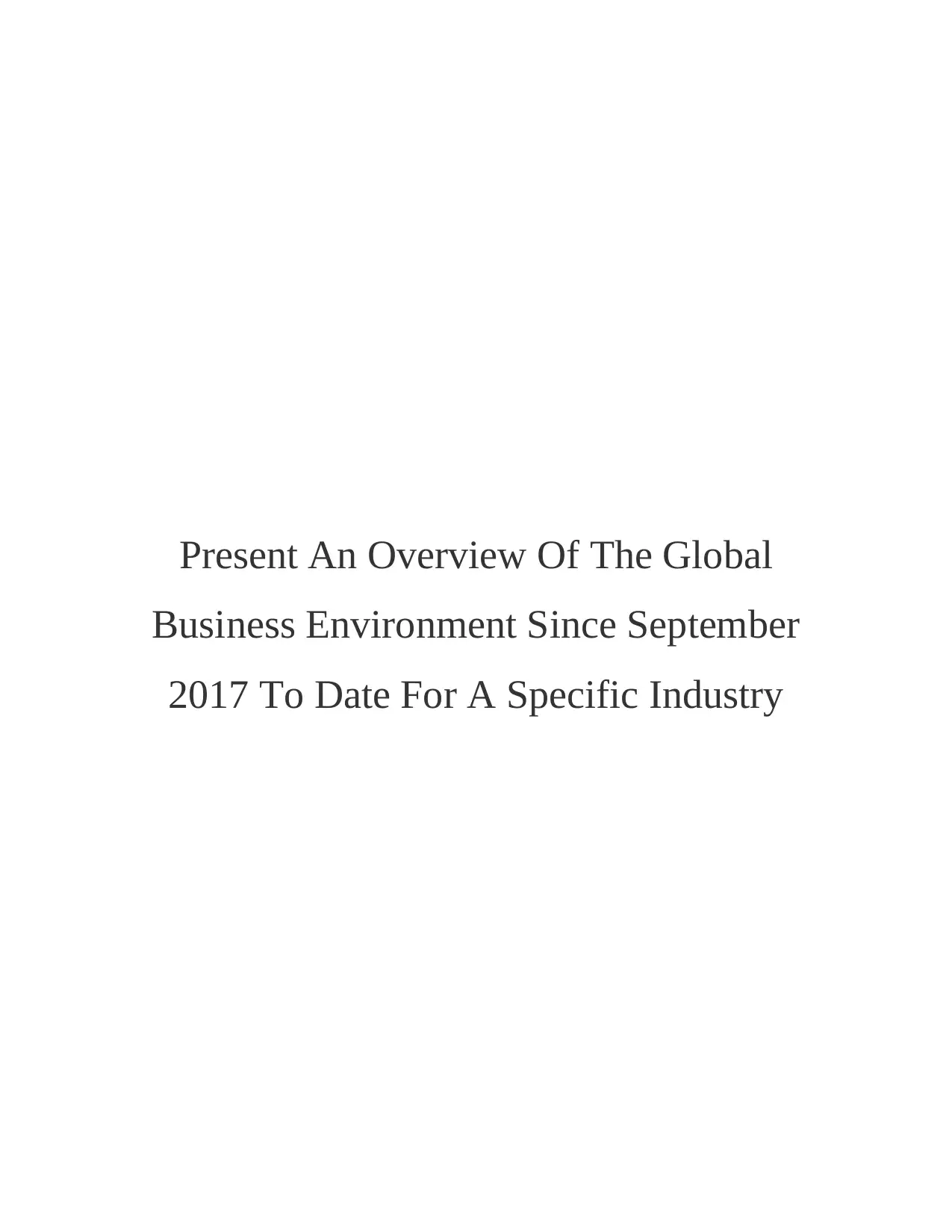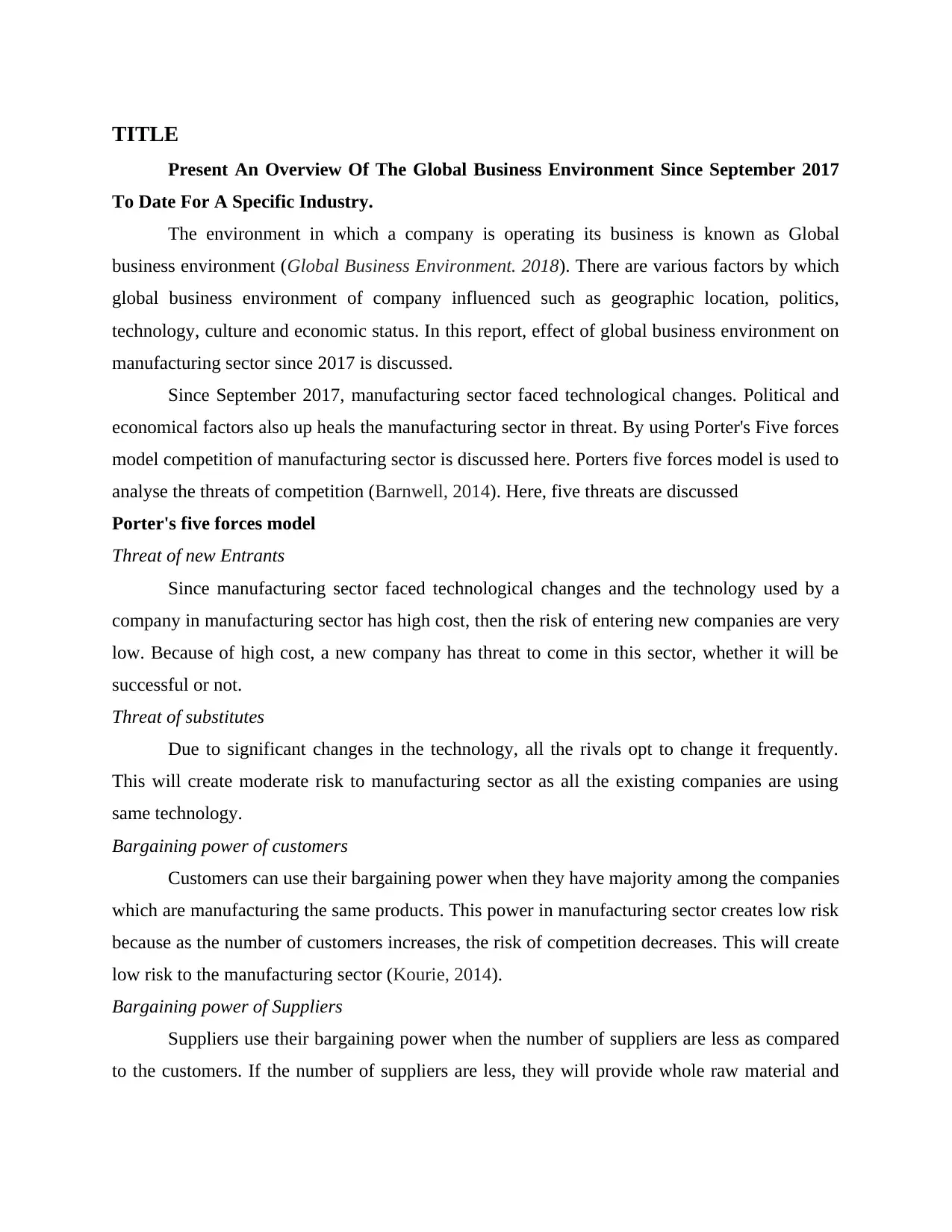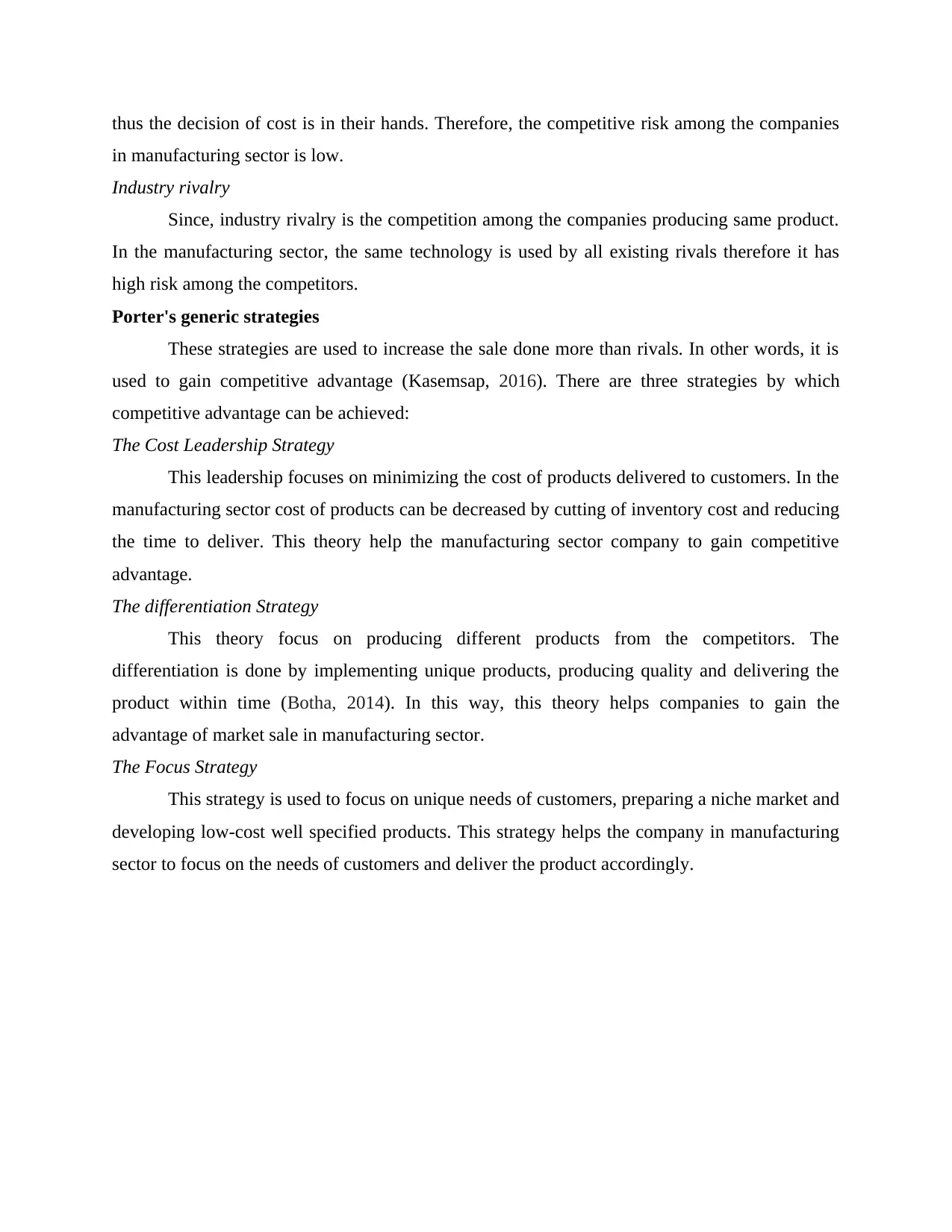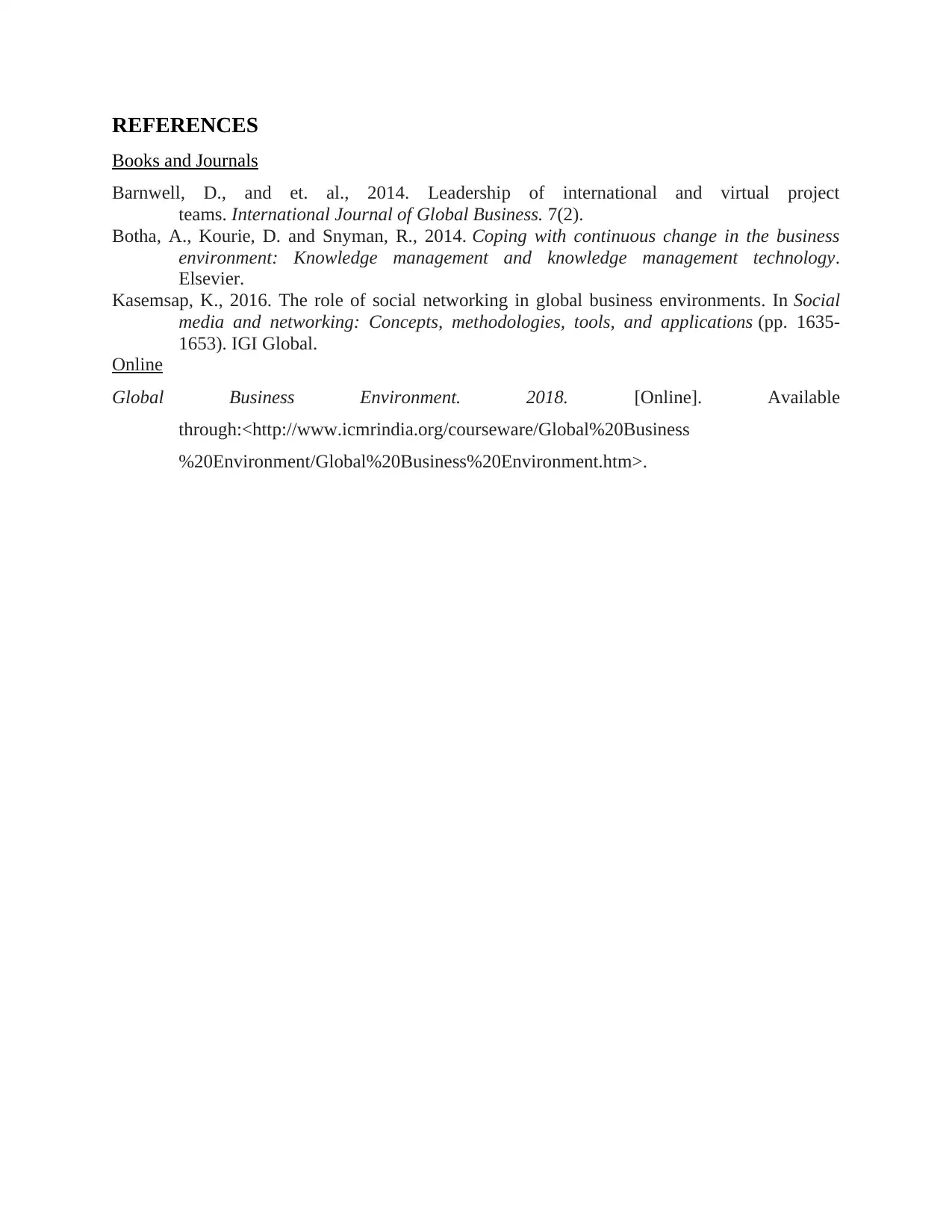Report: Global Business Environment Analysis for Manufacturing Sector
VerifiedAdded on 2020/10/05
|5
|769
|145
Report
AI Summary
This report provides an overview of the global business environment's influence on the manufacturing sector from September 2017 to the present. It examines various factors impacting the sector, including technological changes, political and economic conditions, and competition. The analysis utilizes Porter's Five Forces model to assess competitive threats, such as the threat of new entrants, substitutes, and the bargaining power of customers and suppliers, as well as industry rivalry. Furthermore, the report explores Porter's generic strategies, including cost leadership, differentiation, and focus strategies, to understand how companies can gain a competitive advantage in the manufacturing sector. The report concludes by highlighting the dynamic nature of the global business environment and its implications for strategic decision-making within the manufacturing industry.
1 out of 5












![[object Object]](/_next/static/media/star-bottom.7253800d.svg)